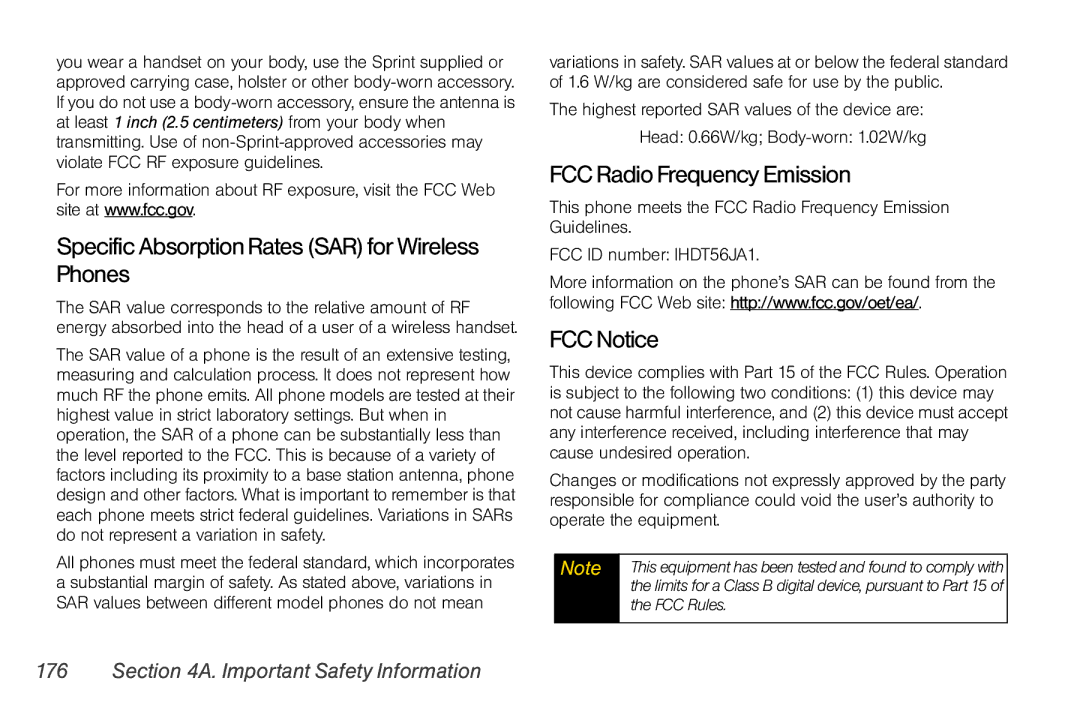you wear a handset on your body, use the Sprint supplied or approved carrying case, holster or other
For more information about RF exposure, visit the FCC Web site at www.fcc.gov.
SpecificAbsorptionRates(SAR)forWireless Phones
The SAR value corresponds to the relative amount of RF energy absorbed into the head of a user of a wireless handset.
The SAR value of a phone is the result of an extensive testing, measuring and calculation process. It does not represent how much RF the phone emits. All phone models are tested at their highest value in strict laboratory settings. But when in operation, the SAR of a phone can be substantially less than the level reported to the FCC. This is because of a variety of factors including its proximity to a base station antenna, phone design and other factors. What is important to remember is that each phone meets strict federal guidelines. Variations in SARs do not represent a variation in safety.
All phones must meet the federal standard, which incorporates a substantial margin of safety. As stated above, variations in SAR values between different model phones do not mean
variations in safety. SAR values at or below the federal standard of 1.6 W/kg are considered safe for use by the public.
The highest reported SAR values of the device are:
Head: 0.66W/kg;
FCCRadioFrequencyEmission
This phone meets the FCC Radio Frequency Emission Guidelines.
FCC ID number: IHDT56JA1.
More information on the phone’s SAR can be found from the following FCC Web site: http://www.fcc.gov/oet/ea/.
FCCNotice
This device complies with Part 15 of the FCC Rules. Operation is subject to the following two conditions: (1) this device may not cause harmful interference, and (2) this device must accept any interference received, including interference that may cause undesired operation.
Changes or modifications not expressly approved by the party responsible for compliance could void the user’s authority to operate the equipment.
Note | This equipment has been tested and found to comply with |
| the limits for a Class B digital device, pursuant to Part 15 of |
| the FCC Rules. |
|
|
